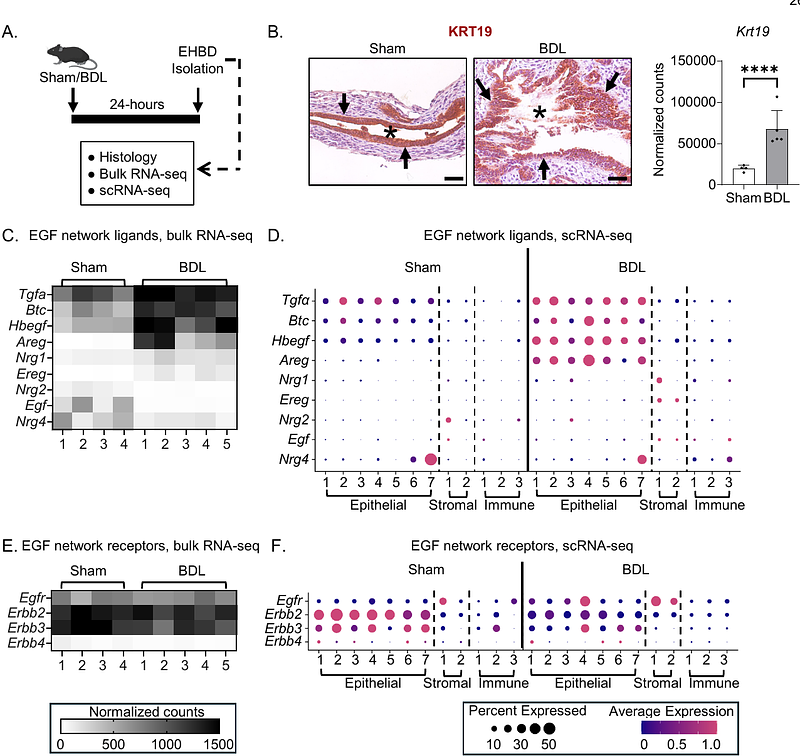EGFR activation in cholangiocytes promotes extrahepatic bile duct regeneration after injury

EGFR activation in cholangiocytes promotes extrahepatic bile duct regeneration after injury
Calder, A. N.; Sakaguchi, T.; Peter, M.; Tobias, J.; Frankel, T.; Razumilava, N.
AbstractBackground & AimsThe epidermal growth factor (EGF) receptor family of tyrosine kinases regulates development and homeostasis of digestive organs including the liver and bile ducts. It consists of four receptors, EGF receptor (EGFR) and erythroblastoma oncogene B 2-4 (ERBB2-4), and their corresponding ligands. EGF signaling promotes intrahepatic cholangiocyte proliferation, bipotent cell transdifferentiation into cholangiocytes, bile duct branching, and cholangiocarcinoma (CCA) aggressiveness.\n\nThe EGF family signaling contribution to extrahepatic bile duct (EHBD) regeneration is not well defined. This work is aimed at determining the fundamental role of the EGF signaling network in the biliary proliferative response to EHBD obstruction.\n\nApproachWe used mouse bile duct ligation to model obstructive EHBD injury, and human and mouse EHBD organoids for in vitro studies. We tested activating and inhibitory paradigms with recombinant EGF family ligands and receptor antagonists.\n\nTranscriptomic and immunohistochemistry analyses informed EGF signaling changes and cellular localization at homeostasis and after obstruction.\n\nResultsAt homeostasis, the EHBD expressed EGFR ligands Tgfa, Btc, Hb-egf and Nrg4 in cholangiocytes, and Egf in stromal cells. Erbb2 and Erbb3 were predominant receptors expressed in cholangiocytes and Egfr in stromal cells at baseline. After EHBD obstruction, injury-induced biliary hyperproliferation was associated with increased abundance of Areg, Hb-egf, Tgf and Btc ligands and Egfr receptor in cholangiocytes with resulting epithelial EGFR activation. In biliary organoids, EGFR ligands induced organoid growth, and inhibition of EGFR, but not ERBB2, dampened cholangiocyte proliferation. Accordingly, EGFR inhibition in mice led to a decrease in the biliary proliferative response after EHBD obstruction.\n\nConclusionThe obstruction-induced biliary proliferation is an EGFR-mediated response suggesting context-and receptor-specific EGF signaling network involvement in EHBD regeneration after injury.